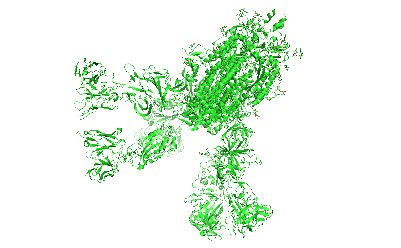Glycoconjugates

Glycoconjugates consist of carbohydrates, or glycans, linked to a protein, lipid, peptide, and other compounds. Glycoconjugates are formed by glycosylation and are involved in various biological processes in organisms. Glycobiology research studies the structure and activity of carbohydrates and glycoconjugates in relation to human health. Understanding how disorders in these processes lead to severe diseases is also relevant to molecular and cellular biology, proteomics, and medicine.
We offer a comprehensive portfolio of glycoconjugates including glycolipids, glycoproteins, and lipopolysaccharides for all your research needs, including extraction, characterization, formulation, chemical/enzymatic modifications involving non-conventional media or activation modes. Discover drug targets for infectious diseases, inflammation, and cancer; develop new potential vaccines against cancer, viral and bacterial infections, and other diseases; and explore other potential uses of glycoconjugates as therapeutics.
Products
Related Resources
- Article: BIOshell Glycan HPLC Columns
Fast, high-resolution separations of procainamide labeled glycans - dextran ladder, human IgG and cetuximab
- Article: Deglycosylation Kits
Find deglycosylation kits for your research. Review the different features of deglycosylation kits for glycoproteins, enzymatic proteins, and native proteins.
- Article: Enzymatic Deglycosylation
Enzymatic Deglycosylation Strategies: Sequential hydrolysis of individual monosaccharides from glycans can be useful for the elucidation of the structure and function of the glycan component.
- Article: Glycoprotein Deglycosylation
Information about Glycoprotein deglycosylation. The diversity of oligosaccharide structures, both O-linked and N-linked, often results in heterogeneity in the mass and charge of glycoproteins.
- Article: Glycosaminoglycans and Proteoglycans
Uncover more about glycosaminoglycans and proteoglycans including the structure of glycosaminoglycans (GAGs), the different types of GAGs, and their functions.
- Article: Glycosphingolipids
Glycosphingolipids (sometimes called glycolipids) have been found in lower and higher eukaryotic sources. They are composed of a glycan structure attached to a lipid tail that contains the sphingolipid ceramide.
- Article: GPI Anchored Glycoproteins
Glycosylphosphatidylinisotol- (GPI) anchored proteins have been identified throughout a broad range of eukaryotic species ranging from humans to insects, yeasts, bacteria, and fungi, suggesting that they are an ancient modification.
- Article: Lipopolysacharides
Lipopolysaccharide (LPS) is a major component of Gram-negative bacteria, important for microbiological research.
- Article: Peptidoglycans
Peptidoglycan structure: alternating GlcNAc and N-acetylmuramic acid cross-linked to peptides form the basic backbone.
- Article: Purification and Removal of Glycoproteins and Polysaccharides
- Article: Strategies for Deglycosylating N-linked Glycans
Explore strategies for releasing N-linked glycans with PNGase F, PNGase A & native & sequential deglycosylation with endoglycosidases & exoglycosidases.
- Brochure: Glycobiology
Glycobiology and glycoproteomics are crucial in life science, with diverse glycoproteins and important roles in cellular communication and physiology.
- Brochure: Glycoconjugates from GlycoNZ
Glycobiology is vital in understanding carbohydrates' role in human health. We offer a wide range of products, including glycoconjugates, and have expanded our portfolio through a partnership with GlycoNZ, offering more opportunities for exploring drug targets for various diseases.
- Selection Guide: Deglycosylation
Complete kits for highly specific deglycosylation.
- Selection Guide: Glycoproteomics Selection Guide — Deglycosylation
Glycoproteomics Selection Guide — Deglycosylation and Glycoproteomics Selection Guide — Labeling and Detection, Quantitation
To continue reading please sign in or create an account.
Don't Have An Account?